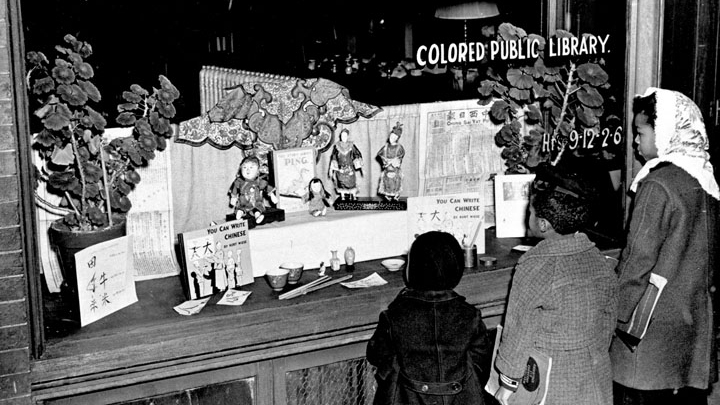This news item expired on Tuesday, March 27, 2018 so the information below could be outdated or incorrect.
I Remember Jim Crow: African-American Women Share Memories of the Era, was presented at the West Asheville Library on March 18, 2007. It featured four women who grew up during the Jim Crow Era in Buncombe County, sharing their stories of what life was like. In this video, you'll hear from Lucille Flack Ray, born in 1924.
The segregation and disenfranchisement laws known as "Jim Crow" represented a system of racial apartheid that dominated the American South for three quarters of a century beginning in the 1890s.
The laws affected almost every aspect of daily life, mandating segregation of schools, parks, libraries, drinking fountains, restrooms, buses, trains, and restaurants. "Whites Only" and "Colored" signs were constant reminders of the enforced racial order.
In 1896, the Supreme Court established the doctrine of separate but equal in Plessy v. Ferguson, after a black man in New Orleans attempted to sit in a whites-only railway car.
On May 17, 1954, at the stroke of noon, the nine Supreme Court Justices announced their unanimous decision in the four cases, now grouped as Brown v. Board of Education. They held that racial segregation of children in public schools, even in schools of equal quality, hurt minority children. “Separate educational facilities are inherently unequal.” The practice violated the Constitution’s 14th amendment and must stop.
Thurgood Marshall, NAACP Counsel and civil rights leader, coordinated several key victories before the Supreme Court that resulted in the dismantling of Jim Crow.
The Civil Rights Act of 1964, the Voting Rights Act of 1965, and the Fair Housing Act of 1968 finally ended the legal sanctions to Jim Crow.
However, the memories of life during the Jim Crow Era are still alive in Buncombe County.
